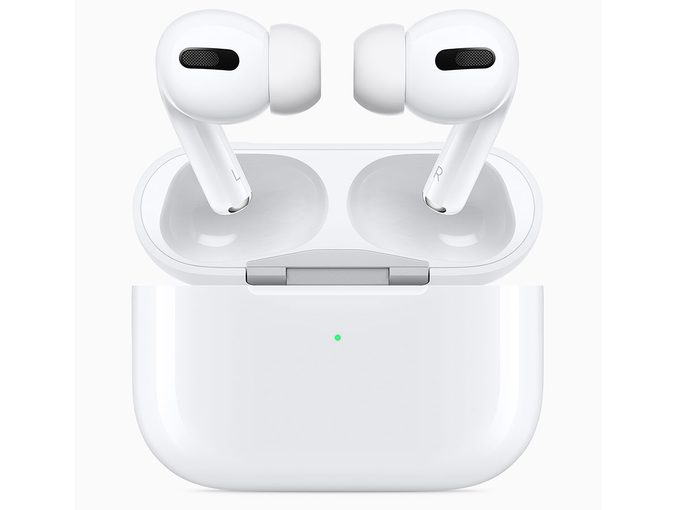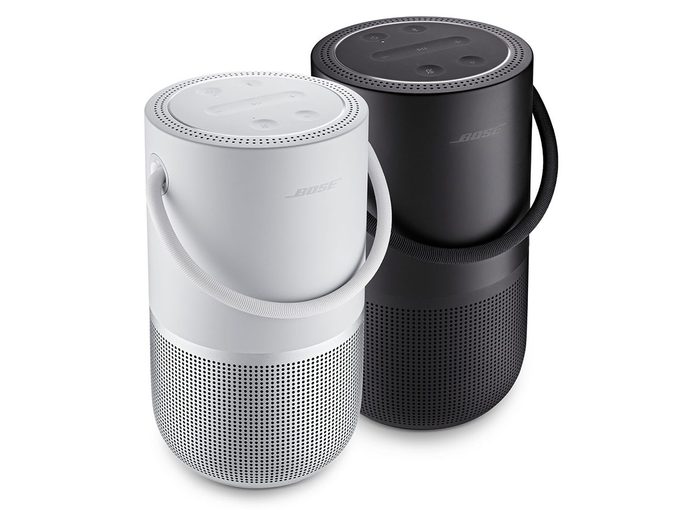Looking to Improve Your Workout Performance? Change Your Music

Struggling to stick to your training plan? Try changing your playlist…
You’ve scoured the web in search of some well-kept secret that will improve your workout performance. Perhaps you’ve splashed out on pre-workout substances that promise instant #gainz, or some obscure equipment your fave celeb has been seen sporting when, really, the answer could be a hell of a lot more simple (not to mention easier on the ole credit card).
Consider this: A killer playlist could be the key to helping you smash your training sessions.
Unconvinced? Let us explain…
Can listening to music improve workout performance?
Put simply, your playlist plays a bigger part in your performance than you probably realize.
A recent study by Matthew Stork, Costas Karageorghis and Kathleen Martin Ginis which looked into the psychological, psychophysical and physiological effects of music during sprint interval exercise (otherwise known as HIIT) found that music does, indeed, have the potential to improve workout performance. And not only that, it can also increase heart rate and enhance enjoyment; a monumentally important factor in determining whether or not you’ll adhere to your training plan.
“There is a combination of physiological and psychological factors that contribute to the effects that music has during exercise,” says Matthew Stork, Postdoctoral Fellow at the University of British Columbia. “This includes brain activation, hormonal and arousal changes, shifts in attentional focus, and motivational factors. These factors can collectively move people into a spot mentally or emotionally where they’re able to operate in a more optimal way. Music can put you in a state of ‘flow’ where you are fully focused and immersed in the task at hand.”
Music can be a particularly useful tool if you’re seeking an increase in output or are lacking inspiration to train. However, there’s a caveat; in order for it to work, you must find the music motivational.
How can you use music to improve workout performance?
“Individual differences in music preferences are extremely important to consider when trying to maximize the motivational and emotional response that music can elicit,” says Stork. “However, certain musical characteristics, such as tempo, can be very useful in generally narrowing down your music selections based on the nature of the exercise.”
In other words, there’s a knack to compiling your personal power playlist. Songs that fall into a genre you enjoy listening to, with lyrics that you find motivational, are a solid place to start. From there, if you want to get real technical, you can filter the songs based on how suited the tempo is to your style of training.
“Music tempo ranging from 125-140bpm is considered optimal for cycling exercise, and fast-tempo (135-140bpm) music seems to be particularly ideal for high-intensity cycling,” Stork advises. “There’s also evidence that the ideal tempo range for treadmill-type exercise ranges from 123-131bpm.”
You can also factor in a few “pre-task” tunes to mentally psych you up before you begin a workout, and some that descend in tempo from 90 bpm to 60bpm to listen to during post-workout recovery. When played during active (movement-based) and passive (static) recovery, these songs have the ability to lower levels of stress hormones and help to make post-workout recovery a habitual activity, according to researchers at Brunel University, UK.
Trainer-Approved Playlists to Try
Not keen on compiling your own playlist? Give these trainer-approved mixes a go during your next workout…
For strength training:
“I rely on music to help set the tone of the workout as it helps dictate the pace and intensity,” says Jennifer Lau, principal at Fit Squad and Nike Master Trainer. “If I’m working mobility like stretching or animal flow, I will choose to listen to something with a chilled vibe.”
Try Jennifer’s playlist.
For high-intensity training and running:
“I tend to gravitate towards 90s and old-school hip-hop jams,” says Mike Ma, trainer at One Academy in Toronto. “Songs that are instantly recognizable, remind people of a fun time in their lives and make them smile.”
Try Mike’s playlist.
For cycling and spinning:
“I usually steer toward house music or pop song remixes that land between 120-130bpm for spin classes,” says Justine Keyserlingk, group fitness instructor at Torq Ride and Equinox. “I think it’s important to play songs that people recognize as there’s an emotional connection, and it encourages them to work harder. This is why in especially love remixes of older—particularly 90s—tunes. People eat that stuff up!”
Try Justine’s playlist.
For barre classes:
“Music is magic when matched to movement,’ says Sabrina Adarna, barre instructor in Toronto. “Specifically in barre, where we move to the tempo of tunes, it’s amazing how a fluid mix of good music can help people work a little harder, push a little further and tolerate that good booty burn just a little more. There’s this sweet spot in every workout where you hear ‘that’ song, completely forget about all the discomfort you’re experiencing and rocket-launch yourself to the next level.”
Try Sabrina’s playlist.
For yoga:
“I curate playlists that evoke feelings of power within me,” says MC Littlejohn, yoga instructor at 889 in Toronto. “I’m not really aiming for an increased heart rate in my classes, so I choose songs that I think attendees will feel a connection to; those that will allow them to be present with the lyrics and melt into them.”
Try MC’s playlist.
Editor-Approved Sound Equipment to Try
Working out in the comfort of your own abode? It wouldn’t hurt to invest in quality earphones and/or speakers—if budget allows—to fully immerse yourself in your epic playlist.
For earphones:

We love the Apple AirPods Pro because of their two settings—Transparency and Noise Cancellation—so you can choose how much you hear (or drown out) in your home.
AirPods Pro, $329, apple.com
For speakers:

We recommend the Bose Portable Home Speaker, for its sound quality and practicality—it’s easy to bring from room to room.
Portable Home Speaker, $450, bose.ca
Next, learn more ways to stay motivated so you never miss an exercise class again.




